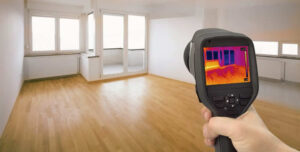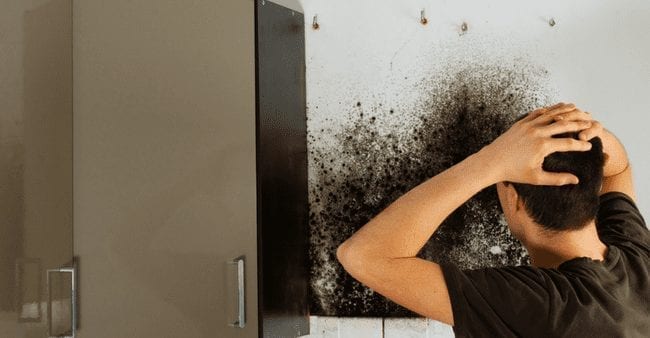Guide To Water Leak Detection In The House
Guide To Water Leak Detection In The House
Blog Article
What are your concepts about Locating water leaks?

Early discovery of leaking water lines can minimize a prospective disaster. Some small water leakages might not be noticeable.
1. Examine the Water Meter
Every home has a water meter. Examining it is a guaranteed manner in which aids you discover leaks. For starters, shut off all the water sources. Make sure no person will flush, make use of the faucet, shower, run the cleaning device or dishwashing machine. From there, most likely to the meter and watch if it will alter. Considering that no person is using it, there ought to be no activities. That indicates a fast-moving leakage if it relocates. Furthermore, if you detect no changes, wait an hour or two and inspect back once again. This indicates you may have a slow leak that can also be underground.
2. Check Water Consumption
Analyze your water expenses as well as track your water consumption. As the one paying it, you need to observe if there are any type of discrepancies. If you detect sudden changes, regardless of your consumption coinciding, it indicates that you have leaks in your plumbing system. Bear in mind, your water expense should drop under the exact same array on a monthly basis. An unexpected spike in your bill suggests a fast-moving leak.
A steady increase every month, also with the exact same routines, shows you have a sluggish leak that's also slowly intensifying. Call a plumber to thoroughly check your residential or commercial property, particularly if you really feel a cozy area on your floor with piping beneath.
3. Do a Food Coloring Examination
When it comes to water usage, 30% comes from bathrooms. If the shade somehow infiltrates your bowl during that time without flushing, there's a leak in between the tank as well as dish.
4. Asses Outside Lines
Don't forget to examine your exterior water lines as well. Ought to water leak out of the connection, you have a loosened rubber gasket. One little leak can waste loads of water and also increase your water expense.
5. Evaluate the situation and also examine
Property owners should make it a behavior to inspect under the sink counters and also inside cabinets for any kind of bad odor or mold development. These two red flags suggest a leak so punctual attention is called for. Doing routine inspections, also bi-annually, can save you from a significant problem.
If you recognize your home is currently old, maintain a watchful eye on your heating systems, hose pipes, pipelines etc. Look for stainings as well as damaging as many pipelines and devices have a life expectancy. They will additionally naturally degrade due to tear and also wear. If you think dripping water lines in your plumbing system, don't wait on it to rise. Call a professional plumber as soon as possible so you do not end up with a horrible mess in your house.
Early detection of leaking water lines can alleviate a prospective calamity. Some little water leakages might not be noticeable. Examining it is a surefire way that helps you find leaks. One small leak can lose lots of water as well as surge your water expense.
If you presume dripping water lines in your plumbing system, do not wait for it to intensify.
WARNING SIGNS OF WATER LEAKAGE BEHIND THE WALL
PERSISTENT MUSTY ODORS
As water slowly drips from a leaky pipe inside the wall, flooring and sheetrock stay damp and develop an odor similar to wet cardboard. It generates a musty smell that can help you find hidden leaks.
MOLD IN UNUSUAL AREAS
Mold usually grows in wet areas like kitchens, baths and laundry rooms. If you spot the stuff on walls or baseboards in other rooms of the house, it’s a good indicator of undetected water leaks.
STAINS THAT GROW
When mold thrives around a leaky pipe, it sometimes takes hold on the inside surface of the affected wall. A growing stain on otherwise clean sheetrock is often your sign of a hidden plumbing problem.
PEELING OR BUBBLING WALLPAPER / PAINT
This clue is easy to miss in rooms that don’t get much use. When you see wallpaper separating along seams or paint bubbling or flaking off the wall, blame sheetrock that stays wet because of an undetected leak.
BUCKLED CEILINGS AND STAINED FLOORS
If ceilings or floors in bathrooms, kitchens or laundry areas develop structural problems, don’t rule out constant damp inside the walls. Wet sheetrock can affect adjacent framing, flooring and ceilings.
https://www.servicemasterbyzaba.com/blog/how-to-detect-water-leakage-in-walls/

I'm just very occupied with Leaking water lines and I hope you appreciated the new post. Are you aware of anybody else who is interested in the topic? Please feel free to share it. I cherish reading our article about Finding hidden leaks.
Report this page